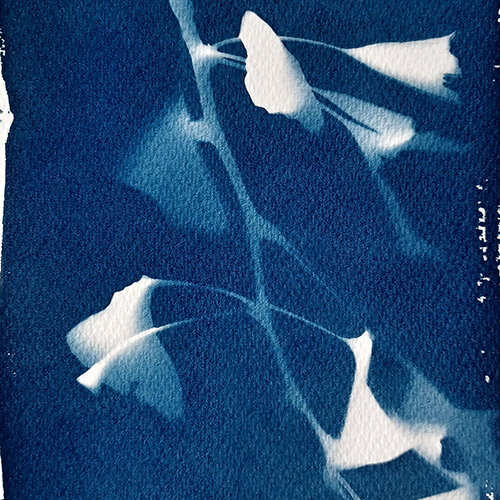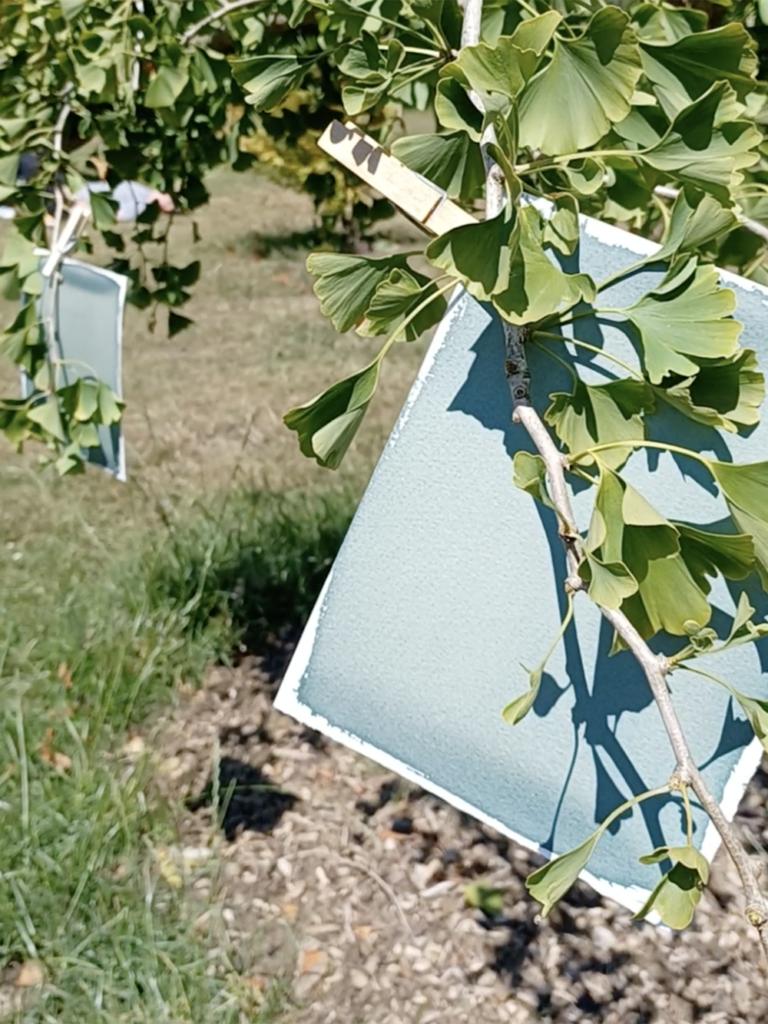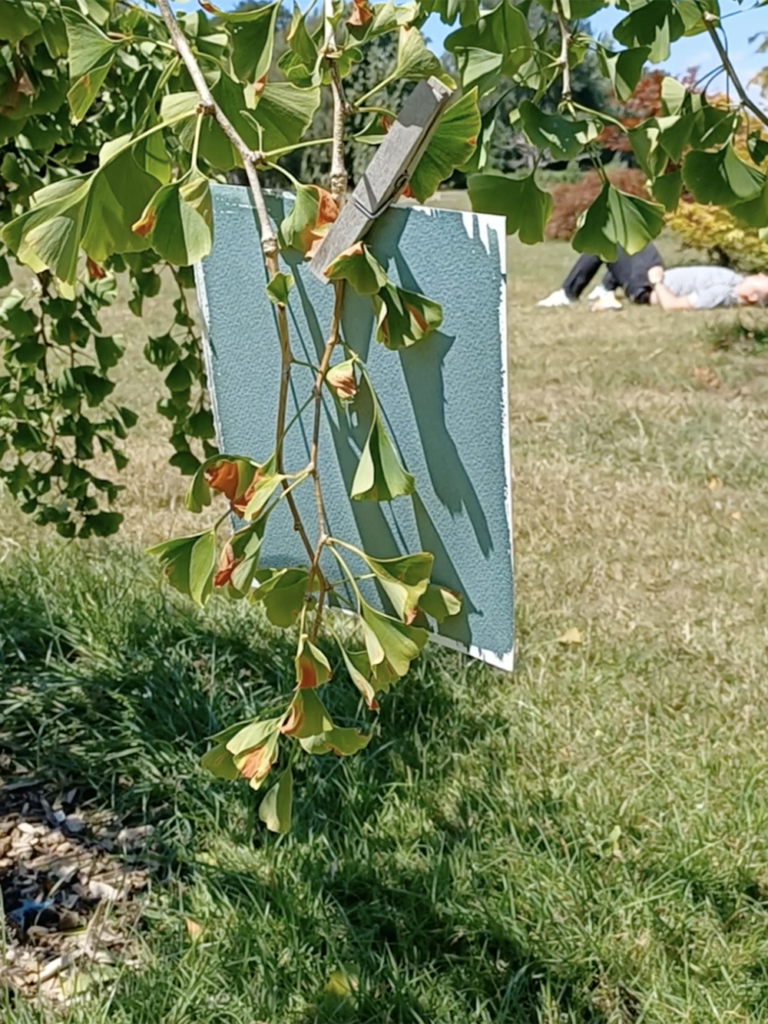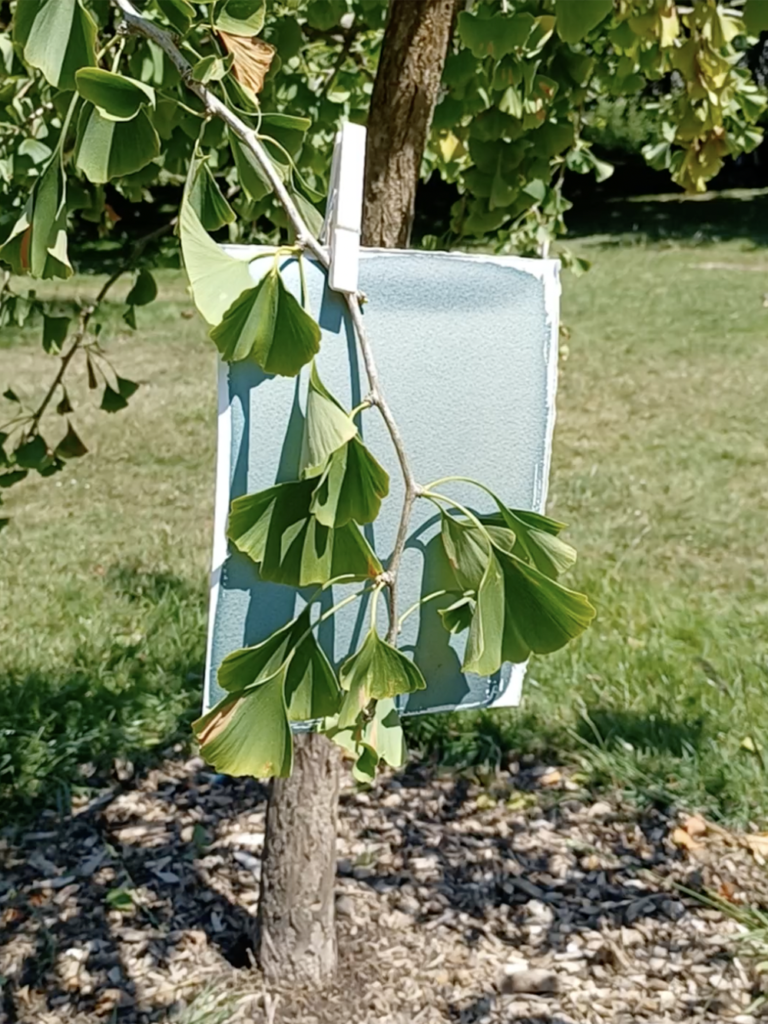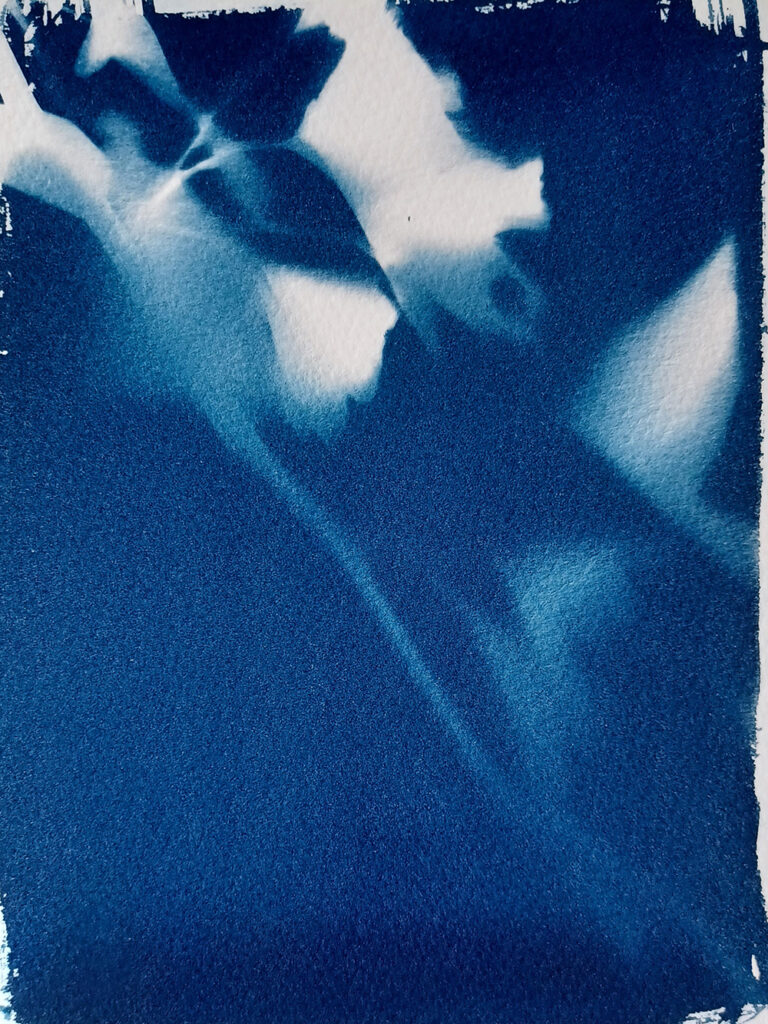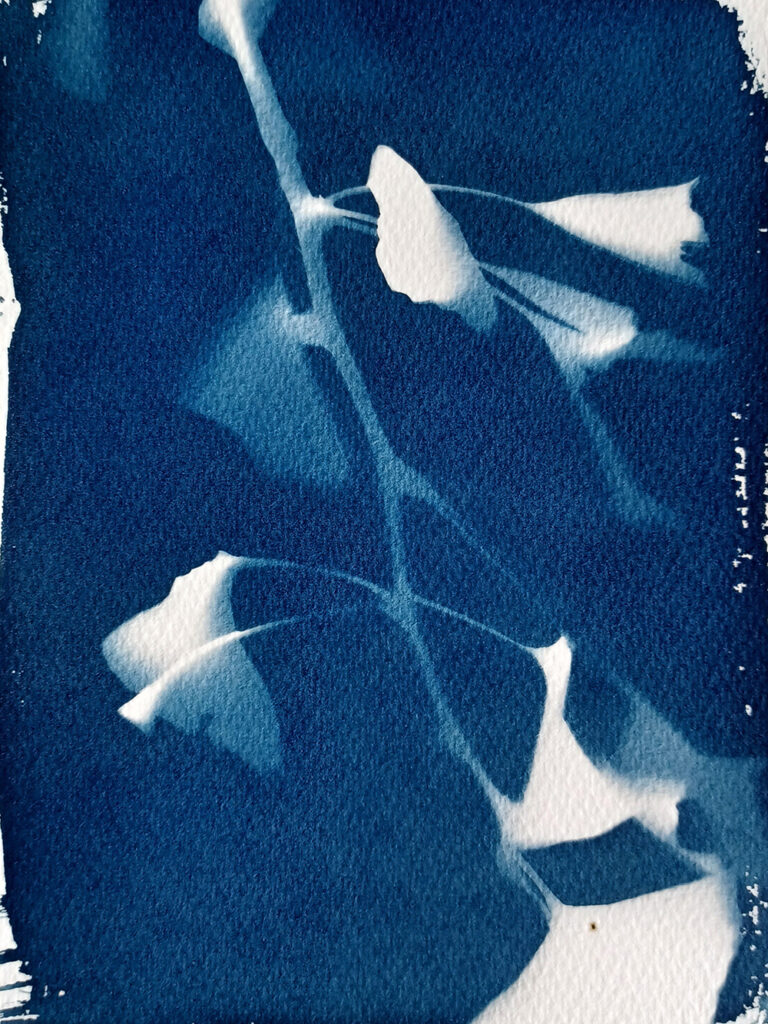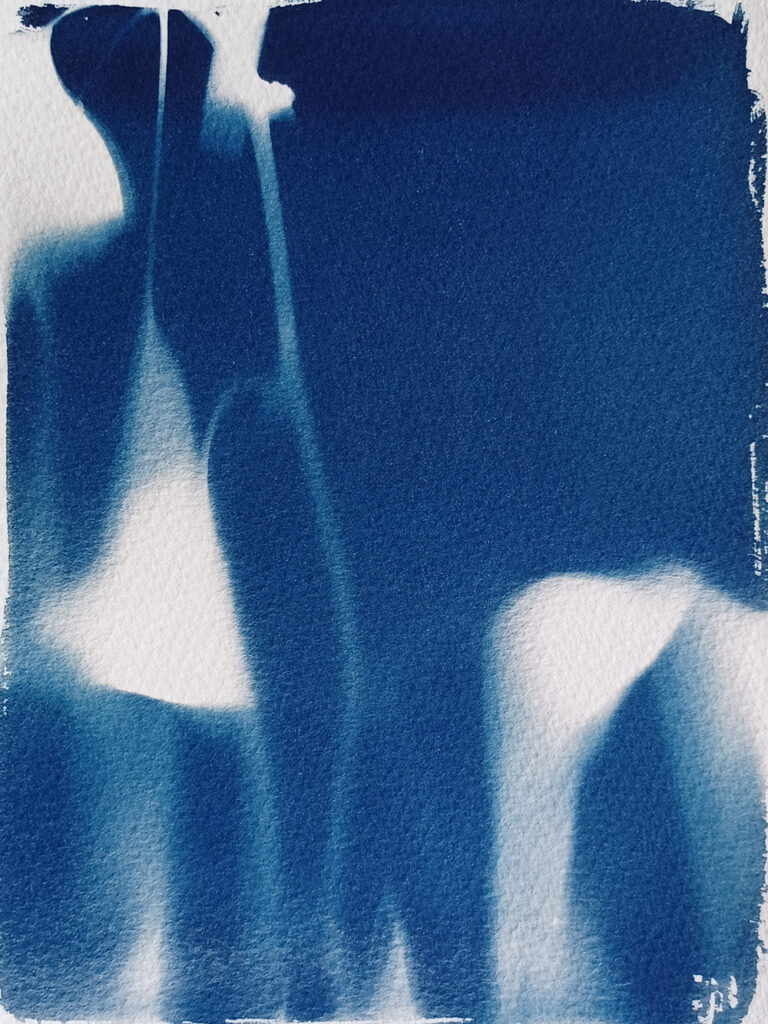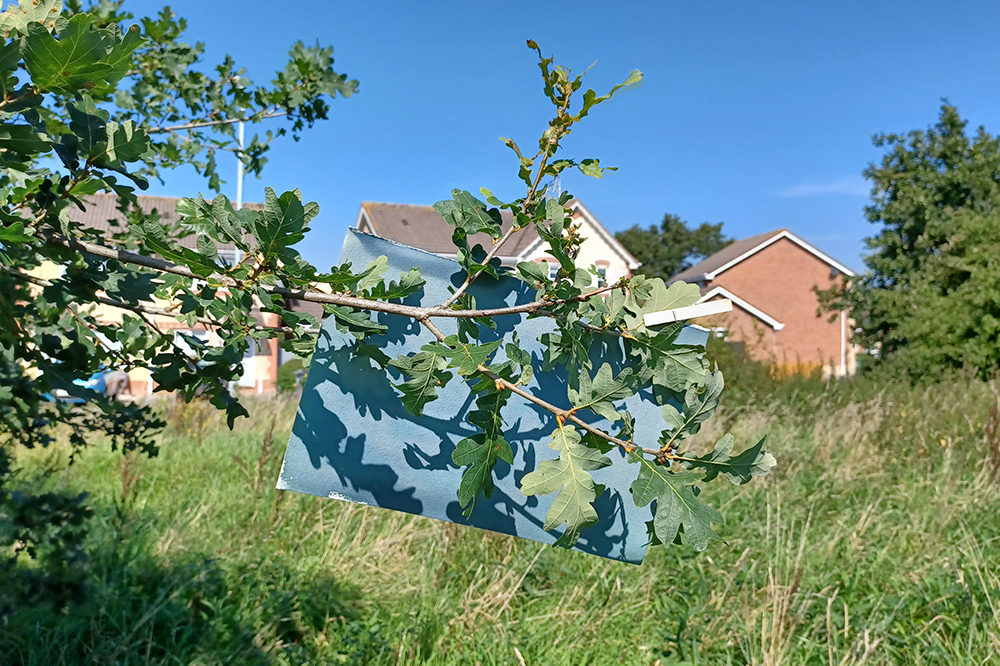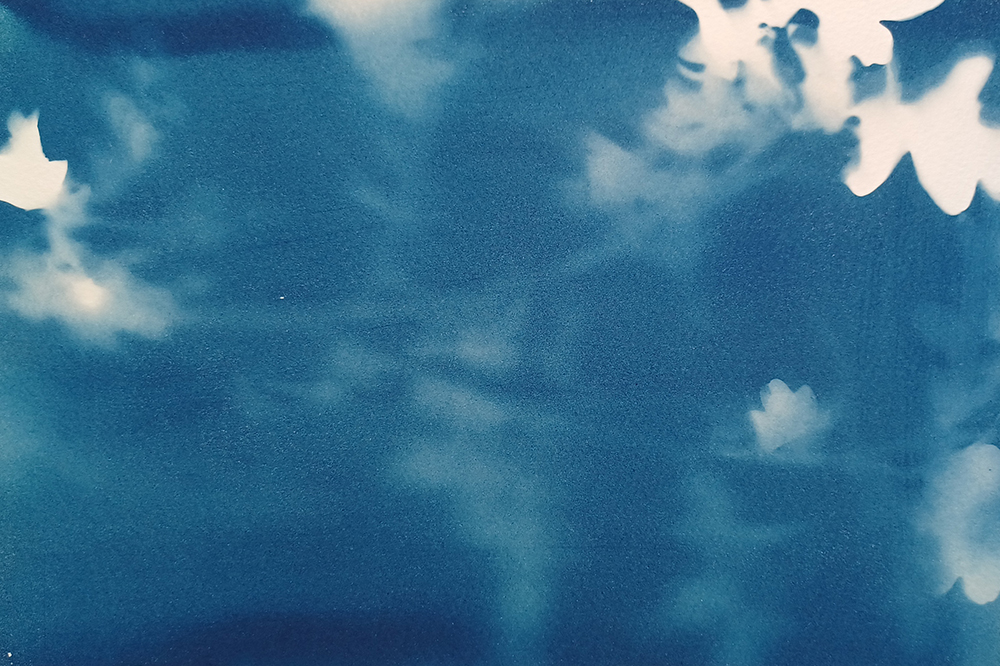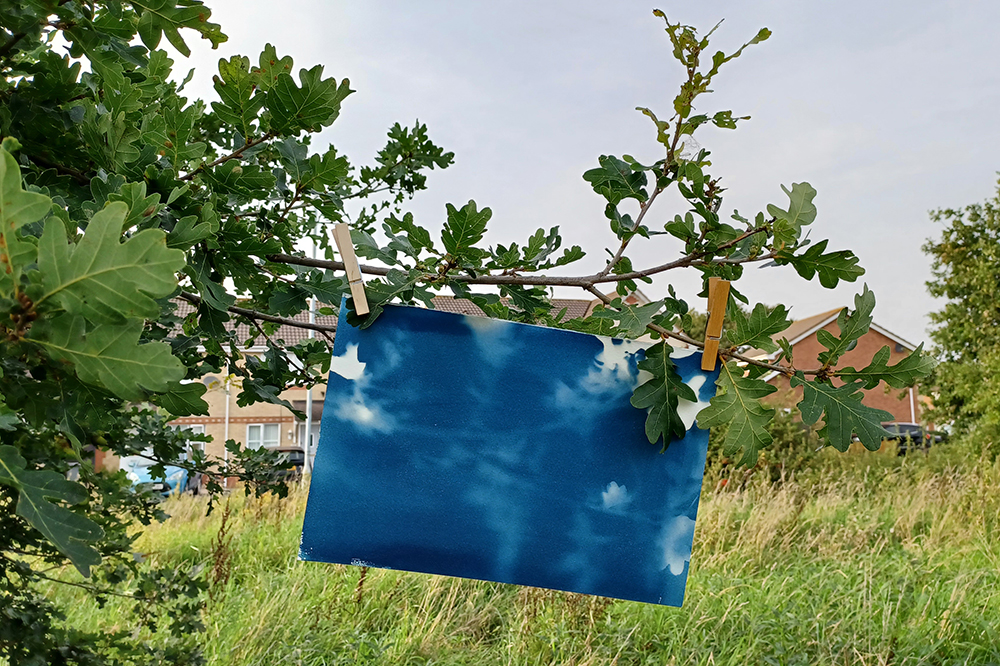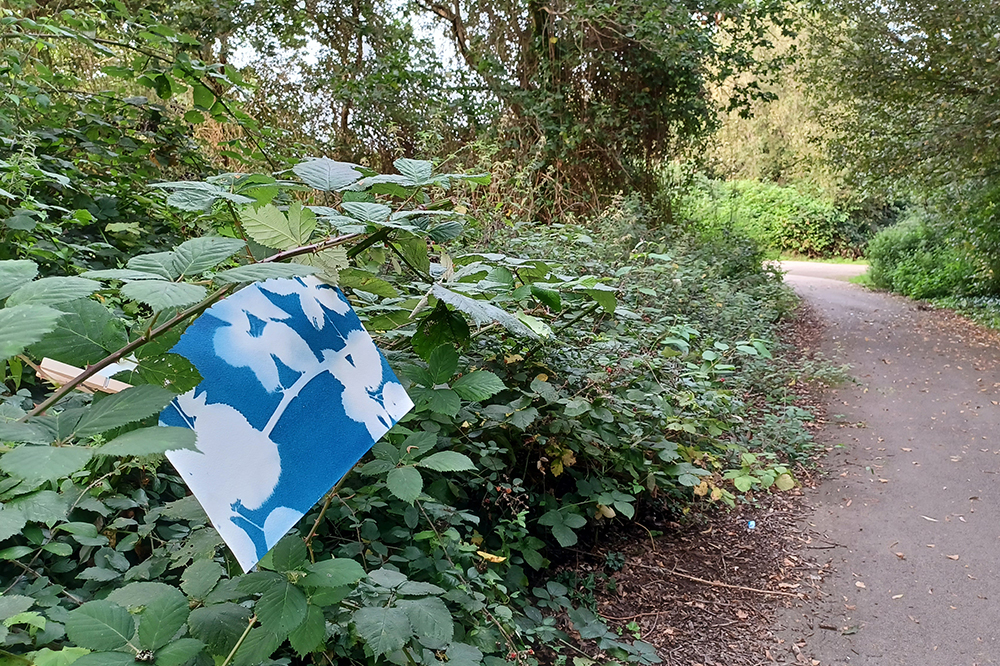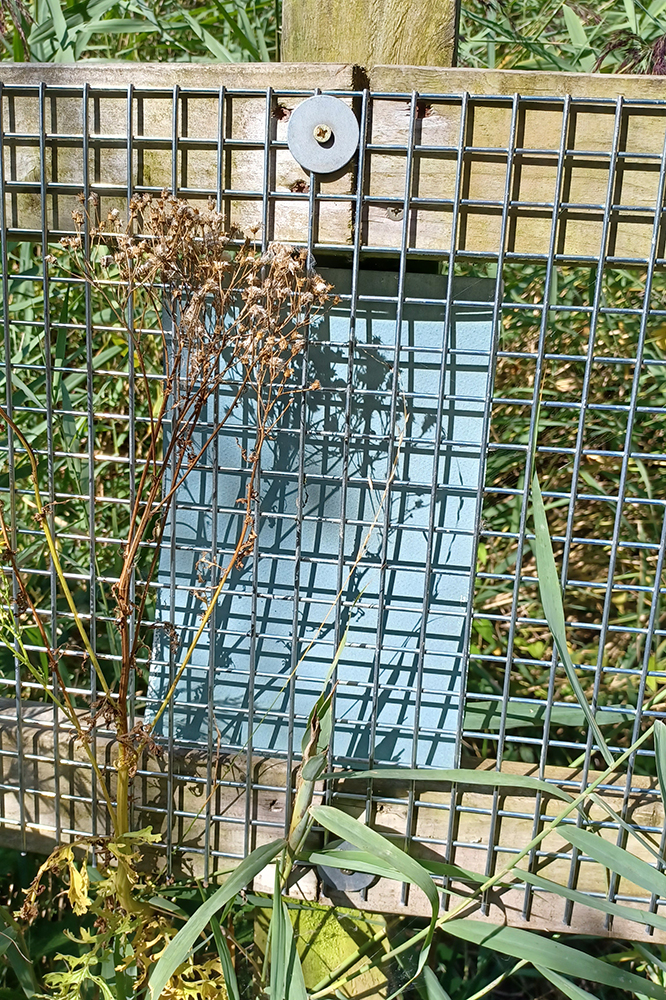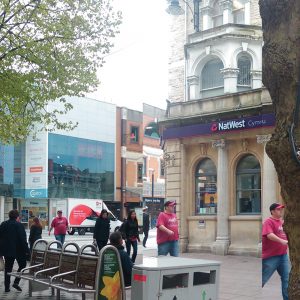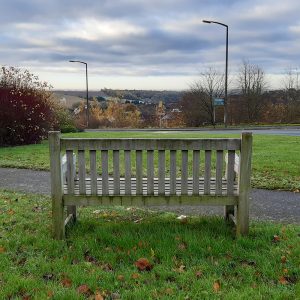In situ – Cyanotypes is a site-specific method where cyanotype printing occurs at a place without destroying the printed objects. The method comes from a need to preserve (not cut or remove), respect the natural habitat and develop a balanced relationship with nature.
During the spring and summer 2023 I began developing a method to make cyanotypes on in situ, on walks, out and about, wherever I was. It began close to home, initially in my garden testing how effective washing prints can be outside. In a shaded place washing in trays works well but when considering washing away from home the availability of water and drainage was an obvious challenge.
After a rethink the method developed to print within a location and bring the latent print home to wash later in the day. That method has so far taken me to local parks of Cardiff and Penarth.
Discussing this method with friends brought the suggestion to take cyanotype printing to the gardens of friends. That took me to two gardens in Cardiff but came with further challenges of arranging suitable dates when the weather was favourable. Neither visits to gardens of friends coincided with fog and cloudy skies, not good weather for printing.
My final in situ printing of 2023 took me back to Hendre Lake on one of the hottest and sunniest days of the year. This visit brought all my learning of the year together and establishes a method I can take into the spring sunshine of 2024.
Materials
Cyanotype paper, two black light proof bags, clothes pegs, rucksack to carry materials.
Method
At home: Prepare the cyanotype paper. Store dry paper in black light proof bag. Place into rucksack with second black light proof bag and pegs.
In situ: find plant (or other) materials in direct sunlight, remove sheet of paper from bag, peg paper to plant material (check for strong shadow and contact points for best print), leave to expose for 5 – 10 minutes. Remove pegs and place paper in second black light proof bag.
At home: wash, dry and flatten prints.
Additional step: Return to the location with dried prints, place into the position of the original print and photograph the print with its corresponding plant material. This final step is only possible because of the non-destructive nature of this process.
